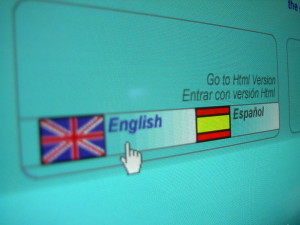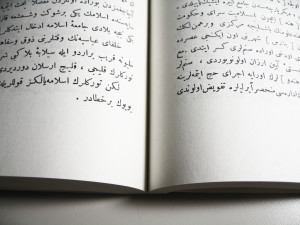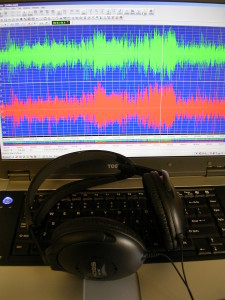Bert’s Language Learning Plan
Wouldn’t it be awesome if you were able to communicate to everyone in the world. I want to so here is a language learning plan I put together.
Actually, I consider myself as an introvert and even when speaking my native tongue (English) I don’t really go out of my way to talk to people, but I still think it would be cool to be able to do so with everyone.
Obviously to do that is near on – if not completely impossible with so many languages, but I have come up with a language learning plan that I think will allow me to communicate to a pretty high percentage of the worlds population. Don’t get me wrong, I am no-where near a genius and to tell the truth, I think my retention level is well-below average.
This is very much a personal language learning plan, but I feel that the general information will be useful for like-minded individuals which is why I am posting it.
Bert’s Language Learning Plan Step One – Decide Which Languages to LearnStep one of my language learning plan is to decide which languages you want to learn and to what level you want to learn them. Here is my list and my reasoning for each.
1. English – Fluency.I am already fluent in English but I put it as the first on the list because if I was not a native speaker it would most definitely be the language on the top of my list to learn to fluency. I think there is little argument that it is the most useful language to know for world travel.
2. Spanish – Fluency.This is the only other language I want to gain fluency in for a few reasons.
* It is one of the most popular languages in the world being very widely spoken and second on the list of how many people speak it as a first language (according to wikipedia.org).
* I love South America and will probably end up living there.
* I am already at a basic level so learning it will be easier (for me) than other languages.
* It is my mother’s native tongue.
3. Chinese (Mandarin) – Conversational.Chinese has the most number of first language speakers in the world by far with 14.1% of the worlds population. The next most spoken (Spanish) is 5.85%. This figure represents all types of Chinese so the actual number of people that speak Mandarin as a first language is probably quite a bit less, however, I dare say the majority of Chinese speakers (of any dialect) that are outside of China (either travel or expatiates) and/or went to school can also speak Mandarin since it is the official language of Mainland China. Even in Hong Kong, Macau and Guangdong where Cantonese is the main language I found the majority of people understood Mandarin.
I also have a few other reasons for wanting to learn Mandarin to a conversational level as opposed to just a basic one.
* I lived and worked in China for just under three years so I have a decent head start.
* I spend a lot of time in Malaysia where Chinese is very widely spoken.
* My fathers heritage is Chinese.
* Chinese people are everywhere. I can’t think of any country I have been to where I didn’t come across at least one Chinese person. Even when I was living in a small town in Nicaragua (Matagalpa) there was a Chinese woman who ran a local store.
4. Malay – ConversationalMalay is one of the odd ones out in this list as not much of the worlds population speaks it and it is only spoken in a few places. Furthermore, most people that speak Malay can also speak English or Chinese.
The main reason I have for wanting to learn Malay to a conversational level is that I have family in Malaysia and I go there quite a lot. I get by fine with English and my basic Malay but it would be nice to be able to converse better with locals… including family.
The Last Four – BasicThese last four languages I want to learn to a Basic level meaning just enough to get by when traveling without having to look things up in a phrasebook too often. They are Arabic, Hindi, Russian and French.
Arabic is number four on the list of popularity but like Chinese this includes all the dialects. I think it will be very hard to grasp, especially the writing system. I feel that many places that predominantly speak Arabic they may not speak any of the other languages on this list.
Hindi is number five on the list of popularity. All the comments I wrote for Arabic I feel apply to Hindi also.
Russian comes in at number eight on the list of popularity and also shares the same comments I wrote for Arabic. When I went to Kyrgyzstan I started learning a little so I am already familiar with the alphabet.
French isn’t very popular in terms of the amount of primary speakers but the overall use of it is quite widespread which makes it pretty useful.
I know that trying to learn this many languages at once will cause confusion, but I feel that will be overcome with time.
All Other LanguagesWhen I know I will be going to a country where I will not be able to get by with any of the above, or I just want to learn the basics for travel purposes (politeness, haggling etc) I will just learn the very basics and use a phrase book for everything else.
* Numbers
* How much
* Please
* Thank you
* Hello
* Goodbye
* More
* Less
If the language does not use the English alphabet I get something basic of anki (see below for explanation of anki) that has audio pronunciation and just delete all the words I don’t want to learn.

Step 1. Decide which languages you want to learn. Image courtesy of FreeImages.com
Step 2 – Download Anki FlashcardsAnki is flashcard software. Once installed you can use it without internet on your phone or pc and when used in conjunction with Ankiweb you can sync your devices. Alternatively, if you don’t want to install software you can just use it via the internet.
I like to use it on my phone because I can just pull it out when-ever waiting around.
The great thing about anki is that the anki-community has already made lots of shared decks so you don’t have to create them. Many of them are very good with most used word lists, audio pronunciation, pictures etc.
Because I like to use it on my phone I go for the smaller files.
To prevent from getting overwhelmed while still having a continuous progression I only learn one new card per language per day, but have maximum revisions.
Furthermore, I only upload a new set of cards for any particular language when I have:
a) Run out of new cards
b) Do not get any revision cards for 3 days in a row
When I upload a new deck I erase the old one. This saves memory space on my phone and also means I only have one deck for each language at a time.

Step 2. Download Anki flash card software. Available at Ankiweb.net.
Step 3 – Learn the AlphabetFor those languages that do not use the English alphabet I first learn their alphabet. Chinese is the exception because there are so many characters. I will learn them as I learn vocabulary.
I downloaded the relative alphabets with audio.
Russian – https://ankiweb.net/shared/info/3396002907
Arabic – https://ankiweb.net/shared/info/121639039
Hindi – https://ankiweb.net/shared/info/1005842297 (No audio)
The Arabic and Hindi alphabets are ridiculously hard to learn for me – I gave up on them. Now I just learn the words without bothering about trying to learn how to read for those two languages. Russian is fairly easy in comparison.
Even for those languages that use the roman alphabet (a to z) you should still learn the alphabet as some of the sounds are different, especially when combining letters. I discovered this with French.

Step 3. Learn the alphabet. The Arabic alphabet is crazy hard to learn. Image courtesy of FreeImages.com
Step 4 – Basic Vocabulary with AudioI learn vocab before phases for two reasons.
a) Single words are much easier to learn than whole phrases which means I can also concentrate on correct pronunciation.
b) People are pretty intuitive and understand single word sentences so knowing full grammatically correct sentences isn’t necessary if all you need to do is get by.
I looked for the smallest files of vocab lists that also have audio. Somewhere between 100 and 500 of the most common words is good.
Spanish – https://ankiweb.net/shared/info/264662891
Chinese – https://ankiweb.net/shared/info/826536923 and https://ankiweb.net/shared/info/1276788392
Malay – https://ankiweb.net/shared/info/310248888
Arabic – https://ankiweb.net/shared/info/967835489
Hindi – https://ankiweb.net/shared/info/454628379
Russian – https://ankiweb.net/shared/info/1540956544
French – https://ankiweb.net/shared/info/33786403

Step 4. Learn basic vocabulary with audio. Image courtesy of FreeImages.com
Step 5 – Learn Common Travel PhrasesAfter learning basic vocab with correct pronunciation I will learn basic travel phrases. To save on space audio is not necessary. As I write this I am still on steps 3 and 4 so I haven’t got any links to share with you, but get everything you want at AnkiWeb.net/shared/decks
Step five is as far as I will go in this language learning plan for those languages which I only want to learn to a basic level.

Step 5. Learn Common Travel Phrases will make it easier to buy things and ask for help. Image courtesy of FreeImages.com
For Languages I Want to Learn Beyond a Basic LevelFor languages I want to learn to a conversational level or higher I will continue to increase vocabulary, common phrases and will also study basic grammar.
I will also more actively seek out practising conversation with native speakers and may also get professional classes, especially for Spanish. Watching movies/TV, listening to music and reading material you are interested in in the desired language is also very beneficial. Basically total immersion.
Well That’s it For My Language Learning Plan. How to You Go About Learning Languages?The post Bert’s Language Learning Plan appeared first on Survive Travel.




